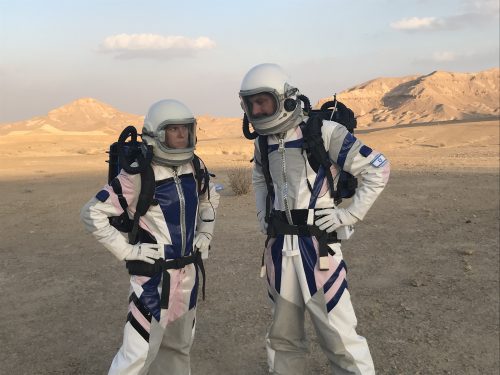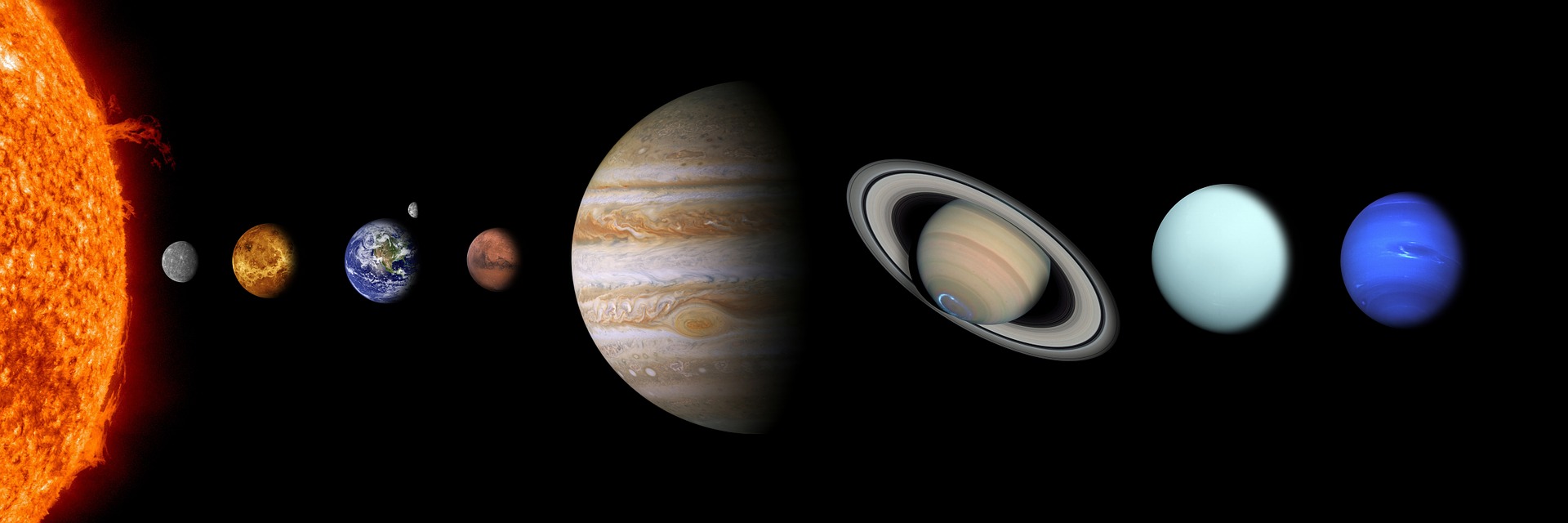In order to colonize Mars, scientists will have to move it to "Earth" - that is, bring about a process of proactive climate change until the conditions there are similar to the conditions on Earth. How do you do it and is it possible?
By B. Beharir, Angle - Science and Environment News Agency

Red mountains frame arid valleys. Several low-rise and mysterious-looking buildings with transparent domes closing in on them stick out from the reddish sand. In Wadi Ram in Jordan, there is a small resort village located near the filming site where the movie "Saving Mark Watney" was filmed, and which offers tourists the most similar experience to visiting the planet Mars that can be obtained on Earth.
It can certainly be a pleasant vacation, but will we or our children get to experience the real thing? What would you be willing to do to visit Olympus Mons or Mariner Valley Mall (the largest of their kind known in the solar system)? How close are we really to establishing a settlement on Mars? What are the risks involved in traveling there? And what about the resources that this race requires and how much they physically and ethically affect our environment and that of other planets?
These and many other questions were raised and answered at a seminar held recently at the Interdisciplinary School of Sustainability in Herzliya Link where Israeli scientists gathered to discuss the future of the journey to Mars.
the race to mars
"The human race must begin to leave the planet within 30 years to avoid its complete destruction due to population explosion and climate change," warned Professor Stephen Hawking at a science conference held in Norway in 2017.
Mars, our neighboring planet and with the most similar characteristics to Earth in our solar system, is the obvious address for such a move.

NASA, the American space agency, plans to send people to Mars in 2030 to investigate the question of life on other planets. It is not at all certain that its astronauts will be there alone. Today also private companies, such as Space X, are planning to bring people to Mars. But unlike NASA, Elon Musk - entrepreneur and founder of the company Space X - does not plan to send some astronauts to Mars to explore it, but intends to inhabit the Red Planet as early as 2024.
"What are the important steps in the evolution of life? Obviously there is the appearance of single-celled creatures, the distinction between plants and animals, the departure of life from the sea to the land, mammals, insight and in addition I argue that making life multi-planetary is on the same scale. This is the next evolutionary step and therefore important and worth a little of our resources," claims Musk.
Why Mars?
Here are some important details about Mars that you should know before signing up for the first manned spacecraft there. The average temperature on Mars is minus 62.7 degrees Celsius. However, Mars also has four seasons, like on Earth, and in the summer the temperature can reach up to 30 degrees in the equatorial region.
Its rotation around the sun and its two moons (Phoebus and Deimos) are the factors that balance the inclination of its axis, which is similar to that of the Earth. But like Earth, Mars is undergoing a dramatic climate change that is reshaping its environmental conditions. Many scientists believe Link? Because in the past half of it was covered by the ocean and rivers and in fact there is even a possibility that even today It has running water But in a discontinuous manner (although it is possible that this is very salty water that is not suitable for drinking) this hypothesis is also given today in dispute among the scientists.

Mars is our neighboring planet and has the most similar characteristics to Earth
Meteorites, solar flares and cosmic radiation
In order to colonize Mars, scientists will have to move it to "Earth" - that is, bring about a process of proactive climate change until the conditions there are similar to the conditions on Earth. Some scientists have already proposed warming Mars by dropping a hydrogen bomb or building facilities that would emit greenhouse gases like on Earth and melt the poles on Mars to warm it. However, these processes can take thousands of years.
Meanwhile, scientists are trying to understand with the help of missions simulating space missions on Earth how the astronauts will deal with problems they will encounter on the surface of Mars.
In fact, the problems of these space pioneers will start already on the way to Mars. The route to Mars includes a stay of about eight months in a spacecraft, which will be exposed to risks such as meteorite impact, dangerous solar eruptions and cosmic radiation that can damage their health. In addition, astronauts who stayed for long periods on the International Space Station reported that they suffered from a gradual and alarming deterioration of the condition of the heart, muscles, vision and skeleton.
Another challenge will be to land on Mars - the atmosphere on Mars is very thin, so entering it could be fatal, as it does not inhibit the landing. Indeed, about 50 percent of unmanned spacecraft have previously crashed on the ground. Therefore, when a manned spacecraft is sent, technologies must be developed that will ensure a safe entry to Mars.
Hermeneutics in the vicinity
This is only a partial list of the scientific challenges that await us on the way to the Red Neighbor. The Israeli project is trying to find the solutions to some of these challenges d-mars, which operates in a facility located near Mitzpe Ramon. From there, the "Ramonauts" (a combination of Ramon and astronauts) set out on their missions. A group of six first Ramonauts went on the first mission and lived together in the facility and performed experiments simulating a stay on Mars: Dr. Hillel Rubinstein, the mission commander, Dr. Reot Sorek-Abramovich, the science officer and the deputy of the commander, Professor Guy Ron investigates the issue of cosmic radiation, Alon Shikar is responsible for the operation of the building, Jackie Faye is responsible for the documentation and Nadav Kushnir is the mission's medical officer.
Mitzpe Ramon was chosen to be the main test site due to its geological similarity to Mars, so that the Ramonauts could imagine they were on Mars and also prepare for scientific experiments in a similar area. "To simulate the hostile conditions on Mars, we go out into the field wearing space suits that weigh 13 kilograms and with biobeat watches, which monitor our medical indicators," says Dr. Reot Sorek Abramovich, who in addition to her activities at d-mars is also a founder The Israeli Mars Association.
Besides the scientific experiments at the facility, d-mars members also tested the psychological and cognitive effects of living in conditions of isolation from the world in a closed place and dealing with communications that arrive with a delay of about 10 minutes with the control center "on Earth" (an Austrian imaging facility located in Oman). "The further away you are, there is a greater delay and there is no real time. In a distress situation, an emergency call can reach the control room after 25 minutes. This time depends on the relative distance between the two planets and the spacecraft," explains Prof. Yair, Dean of the School of Sustainability at the Interdisciplinary Center.
The d-mars facility is unique in that it does not harm the local ecology. First, it is not a permanent installation but a mobile one, so it does not crush the ground and harm the local micro-ecology. In addition, dmars received permission from the Nature and Parks Authority to operate in a place where the intervention in the ecology will be minimal and most of the areas where they operate have already been destroyed in the past by military jeeps. In fact, this is also how astronauts prepare for landing on other planets. The landing site on Mars is very important not only for the safety of the landing, but also to avoid damage to places where local life may exist, such as a geological structure that can testify to an ancient sea, an underground lake or a cave.
As you can see, reaching and settling on Mars requires an investment of huge resources. For example, NASA invested over two billion dollars just to send the Curiosity rover to Mars. So does the climate change on Earth, the depletion of natural resources and the scaremongering prophecies that we will not be able to live here really justify this huge investment?
Is it worth it?
"I believe that people should be landed on Mars because of the 'Apollo effect' - which caused 50 percent of high school students in the US to study science in the 70s solely because they saw a man jumping on the moon," says Sorek Abramovich. "It had nothing to do with a sense of technological superiority over the Russians or that we now have minerals on the moon, meaning it was not a practical reason. But actually the Apollo program took care of the technological development of the USA. I believe that analog missions and bringing people into space itself changes all generations and enables completely new technological horizons. The change is my consciousness and once we get there we will find unexpected things and write a new human history. There are people who use the fear effect and say that the Earth is going to doom, I do not believe in this approach and it is not correct, the effort to Mars is enormous and requires a lot of resources"
So you probably don't have a reason to rush yet with planning your next vacation on Mars, but you and your child can certainly take part in d-mars' activities. The organization will soon issue a call for the following d-mars missions released in 2019 and 2020 for graduates and high school students. It is not necessary to be only scientists, but people with natural curiosity, who are ready for the experience and to be closed with a team of people and to go out into the field under severe limitations.
More of the topic in Hayadan:

6 תגובות
In the long term, you should invest in Laharitz rather Venus. Venus is in principle compatible with the Earth, with almost the same gravity as the Earth. Gravity: This is the most important parameter for life on another planet. Everything else (magnetic field, atmosphere, water, etc.) can be overcome, it's just a matter of money. On the other hand, one does not know how gravity is different
The Earth's gravity will affect the biology of humans for a long time. In the long run, putting humans on Mars, with a very low gravity relative to Earth, is a very dangerous thing. It can even create in principle a different biological species.
And the meaning is clear. it's not worth it.
The first step is to create a magnetic field. This is theoretically possible but requires huge magnets to be launched into space in orbit around Mars. A little expensive.
Without a magnetic field, any atmosphere that forms will quickly disappear by the solar wind.
A waste of money. And shortening the lifespan of the planet. It's better to invest here in saving our planet than to fantasize about something that will never be within our reach, especially the scientists who say a nuclear explosion will heat up the planet
Excellent article. Thank you.
I'm sorry but in my opinion the D-MARS project is quite a joke, the missions there last about two weeks!!! It doesn't even begin to come close to the length of a real mission, for the participants it's just fun, there's no challenge and nothing to learn from it, for these missions to have any value they need to be at least a few months long.
Unworthy and unwise
http://www.tapuz.co.il/blogs/viewentry/7436555